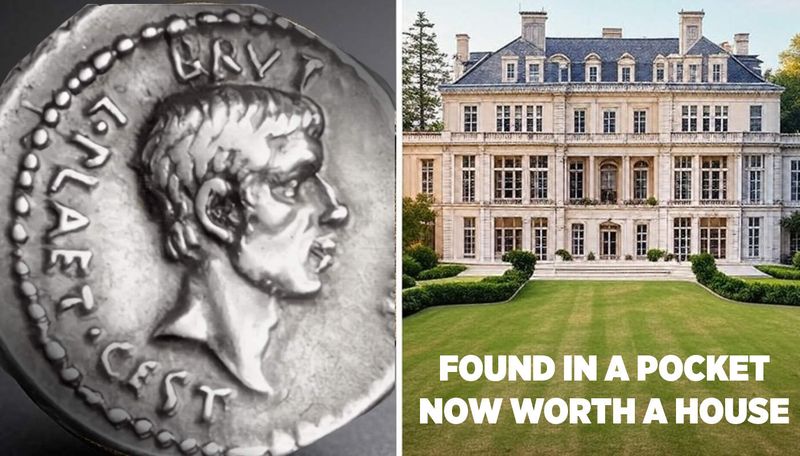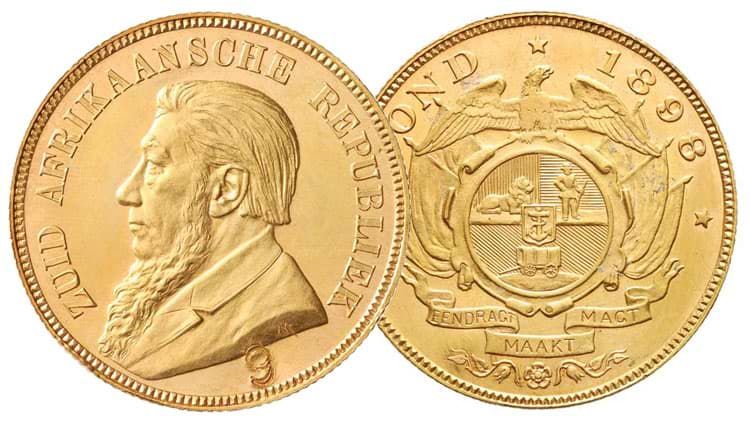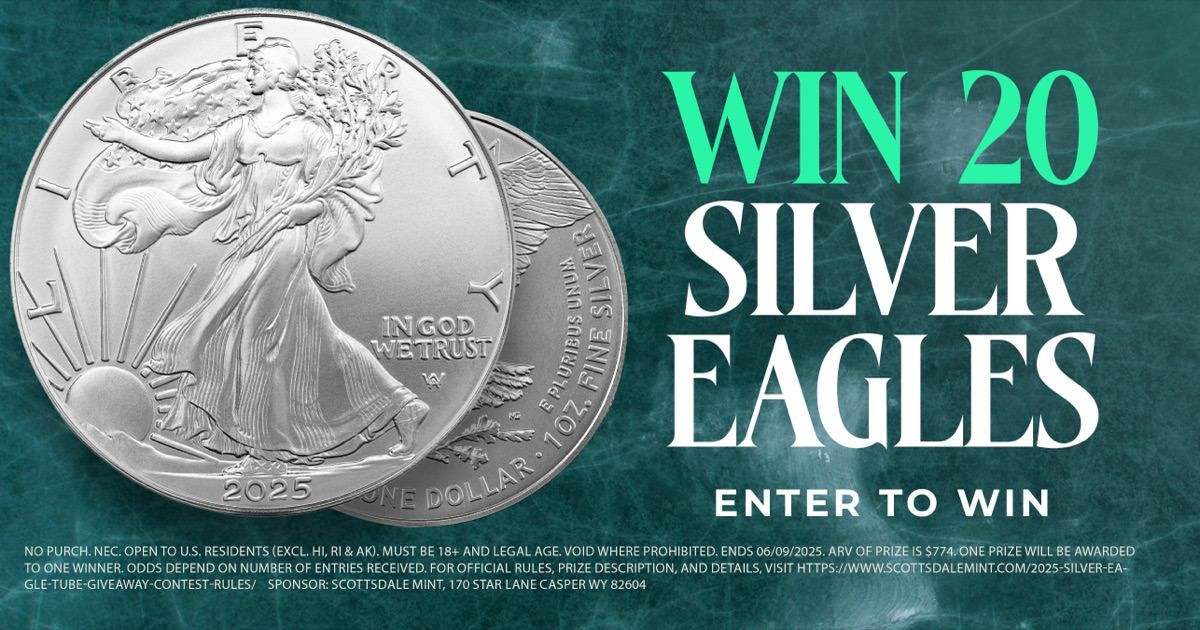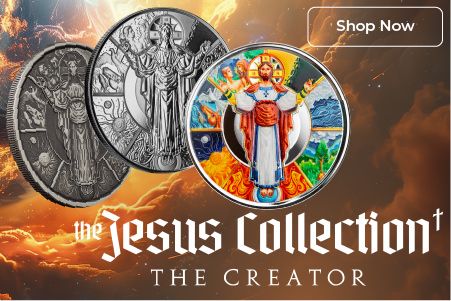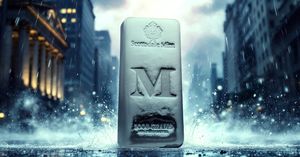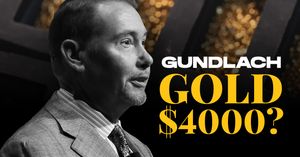A nickel worth millions of coins from the collection of an Egyptian King, and a Canadian Maple Leaf with a million-dollar face value – these are just a few of the high-ticket coins to place themselves among the most valuable in the world.
Keep in mind, that these may not even be the tip of the iceberg, as private transactions are confidential and never seen by the public. However, the sums of money these coins demand are through the roof. Each of these coins carries significant historical value and entire books could be written on each of them (who knows, some may already exist).
Feast your eyes as these are the rarest (and most expensive) coins known to exist.

#17 – 1913 Liberty Head Nickel (Hawaii Five-O)
This coin was special enough to have its TV episode. Considering that in 1972, it was the first rare coin to sell for over $100,000. The following year, Hawaii Five-0 aired the episode “The $100,000 Nickel”, which featured the 1913 Liberty Head Nickel.
The funny thing is, the origins of this coin are muddy, as only 5 of them exist and none were officially authorized. The Liberty design ended in 1912 and was followed in 1913 by the Buffalo design, so how this made it through and into the hands of the public will remain a mystery. To no surprise, this “mistake” has led to one of the most valuable coins in history.
Only three of these coins are in private hands, and having a lucky (and wealthy) owner would also put them among a neat list of previous owners. King Farouk of Egypt had one of the five and it would later end up in the hands of the Smithsonian, where it still sits today.
Rare coins are valued not only for their unique minting circumstances or historical significance but also for their provenance—the documented history of their ownership. This chain of previous owners can significantly enhance a coin’s rarity, appeal, and value to collectors.
The Hawaii Five-O Nickel is a distinctive example of the five rare 1913 Liberty Head nickels, notable for its adventurous history. It earned its nickname from an appearance on the popular television series Hawaii Five-O in the 1970s, illustrating how rare coins can capture public attention. Valued for its exciting history and public recognition, the Hawaii Five-O Nickel stands out in the numismatic community.
Unlike the Eliasberg Specimen, which has largely remained in secure collectors’ vaults, the Hawaii Five-O Nickel has experienced a more dynamic journey. It has changed hands multiple times and has been publicly displayed, showcasing its role in the numismatic community. Although it may not be in the same pristine condition as the Eliasberg specimen, its rich history adds significant value to its story.
This coin’s narrative includes a dramatic theft and subsequent recovery, further enhancing its allure and character. The Hawaii Five-O Nickel embodies the adventurous spirit of the five 1913 nickels, making it a compelling piece for collectors and historians alike.
Country: United States
Hawaii Five-O Nickle Value at Auction: $4,000,000+ USD
#16 – The 1898 Single 9 Pond
The 1898 Single 9 Pond coin holds a unique and significant place in numismatic history, primarily due to its unparalleled rarity and the fascinating circumstances surrounding its creation. As the only known example of its kind, it embodies the essence of historical value, making it not only a remarkable collectible but also the most valuable coin ever struck on the African continent, with a value estimated at $4,000,000.
The story behind the Single 9 Pond is intertwined with the tumultuous backdrop of the 1899 Anglo-Boer War, a conflict between the British Empire and the South African Republic. During this period, President Paul Kruger sought to assert the independence of the South African Republic, which included establishing a new currency. To facilitate this, dies were ordered from Germany that featured the year 1899. However, due to interception issues, these dies never materialized.
In a resourceful attempt to adapt, the authorities used existing 1898 dies, but with a notable modification: a “9”was punched onto the obverse to signify the intended year. This led to the creation of the Single 9, as the larger “9” proved too cumbersome, resulting in only one coin being struck in this manner. All subsequent coins were stamped with the standard “99,” further solidifying the uniqueness of this particular piece.
The coin’s historical significance deepens with its provenance. In recognition of the South African Republic’s newly asserted independence, the Kruger government presented the Single 9 Pond as a gift to C.E. Macrum, the United States Consul General at the time. This gesture highlights not only the coin’s numismatic importance but also its diplomatic significance during a pivotal era in South African history.
Over the years, the Single 9 Pond has exchanged hands among collectors, including the notable King Farouk of Egypt, who was known for amassing one of the most extensive collections of rare coins in history. Its journey through various collectors adds layers to its allure, making it not just a coin, but a tangible piece of history with stories to tell.
In summary, the 1898 Single 9 Pond is unique not only because it is a one-of-a-kind specimen but also due to its historical context, the creative ingenuity behind its minting, and its distinguished provenance. Together, these elements contribute to its status as a sought-after treasure in the world of numismatics.
Country: South Africa
1898 Single 9 Pond Value at Auction: $4,000,000
View image and read more about it at ngccoin.com!
#15 – $1 Million Canadian Gold Maple Leaf
The $1 Million Canadian Gold Maple Leaf is a remarkable piece of numismatic history, valued at $4,020,000, and is notable for the scandal that has captivated collectors and the public alike.
Initially minted by the Royal Canadian Mint, it was once the largest gold coin in the world, weighing an astonishing 100 kilograms (about 220 pounds). Its impressive mass and intricate design featuring the iconic maple leaf showcase Canadian artistry and craftsmanship.
However, the coin’s notoriety is primarily tied to its theft from Germany’s Bode Museum on 27 March 2017, where it was on display as part of a collection that showcased some of the world’s most extraordinary currency. The audacious heist drew widespread media attention and sparked a multi-national investigation. While the suspects were apprehended, the giant gold coin itself has never been recovered, leading to rampant speculation and intrigue.
Theories abound regarding its fate; some believe it may have been melted down and transformed into smaller, more easily concealable pieces of gold jewelry or other items, such as wedding bands. This adds an additional layer of mystique to the coin, as it raises questions about its potential existence in various forms, making it a topic of discussion among treasure hunters and historians.
In addition to its sensational backstory, the coin represents a significant feat in modern minting technology and design. The Gold Maple Leaf series itself is renowned for its high purity and striking imagery, making this particular piece a standout not only for its dimensions but also for its implications regarding value and security in numismatics.
Overall, the $1 Million Canadian Gold Maple Leaf transcends its role as merely a coin; it embodies a captivating narrative of theft and intrigue, alongside its physical grandeur, solidifying its place in the annals of rare currency. Its story continues to evolve, drawing interest from collectors, historians, and the general public, all eager to learn more about its elusive nature and the mystery that surrounds it.
Country: Canada
$1 Million Canadian Gold Maple Leaf Value at Auction: $4,020,000
#14 – 42 BC Q. Servilius Caepio (M. Junius) Brutus AV Aureus
How often do you think about the Roman Empire? For some, enough to spend a fortune on a single coin.
The 42 BC Q. Servilius Caepio (M. Junius) Brutus AV Aureus is a coin of immense historical significance and rarity, valued between $3 million and $4.1 million. Minted after Julius Caesar’s assassination, it symbolizes a pivotal moment in Roman history and the rise of the conspirators, particularly Brutus, who aimed to cement their legacy through commemorative coinage.
What sets this coin apart is its direct association with one of history’s most infamous political events—the Ides of March. The obverse features the profile of Brutus, who is portrayed with a strong, determined visage, symbolizing his role as a leader of the assassination plot. The reverse bears the inscription “EID MAR,” a poignant reference to the date of Caesar’s assassination, serving as both a reminder of the event and a declaration of Brutus’s newfound power and influence.
The rarity of this coin enhances its allure. Of the original mintage, only three gold aurei are known to exist today, with only one remaining in private hands. This limited availability not only elevates its market value but also creates a sense of urgency and exclusivity among collectors and historians. The coin’s historical context, paired with its rarity, allows it to serve as a tangible connection to a transformative era in Roman history.
Moreover, the aureus represents a significant evolution in Roman currency, showcasing the use of gold as a medium of exchange during a time of political upheaval and change. Its intricate design and the story behind its creation make it a remarkable piece for any collector interested in the intersection of art, history, and economy.
In summary, the 42 BC Q. Servilius Caepio (M. Junius) Brutus AV Aureus is not merely a coin; it is a historical artifact that encapsulates a dramatic narrative of power, betrayal, and the complex nature of Roman politics, solidifying its status as a treasure within the world of numismatics.
Country: Roman Republic
Estimated Value at Auction: $3 – 4.1 million

#13 – 1913 Liberty Head Nickel (Eliasberg Specimen)
A holy grail among nickels. This one is part of the same five mentioned in #17. It’s coined (pun intended) the “Eliasberg nickel” as an ode to the long-time holder. Eliasberg was notorious for having the only complete U.S. coin collection dating back to 1792. It can be said that he’s one of the most avid coin collectors to have ever lived. His entire collection was later pieced out and sold for over $45 million.
The Eliasberg Specimen Nickel is a remarkable gem in the world of coin collecting, being one of only a handful in existence. Struck in 1913 with the Liberty Head design—despite not being authorized for that year—it carries an intriguing mystery.
Condition is paramount in the realm of old coins, and the Eliasberg Nickel stands out for its exceptional quality, earning top marks from expert graders as if it hasn’t aged since its minting.
Named after the renowned collector Louis Eliasberg, this nickel has passed through several hands, each time fetching millions—a value surpassing that of most homes.
For novice collectors, the Eliasberg Nickel embodies the ideal collectible: its rarity, excellent condition, compelling history, and continually rising value make it a coveted prize.
While owning such a rare coin may be a distant dream for many, exploring treasures like the Eliasberg Specimen deepens our appreciation for what makes coins special and valuable, highlighting the excitement of coin collecting. Who knows? You might just find a rare coin of your own one day!
Country: United States
Value at Auction: $4.5 million

#12 – 1907 Proof Saint-Gaudens Gold Double Eagle Ultra High Relief Lettered Edge
The 1907 Proof Saint-Gaudens Gold Double Eagle Ultra High Relief Lettered Edge is a striking example of American numismatic artistry and innovation, making it one of the most valuable coins in the world, with an estimated value of $4.75 million. Its uniqueness stems not only from its extreme rarity—only 13 to 15 are known to exist—but also from the historical significance and meticulous craftsmanship behind its creation.
Commissioned by President Theodore Roosevelt, this coin was part of a broader effort to enhance the aesthetic quality of U.S. coinage. Roosevelt believed coins should embody the nation’s ideals, so he enlisted renowned sculptor Augustus Saint-Gaudens to create what would become one of America’s most celebrated coins. The result was a stunning design featuring a dynamic depiction of Lady Liberty on the obverse and a powerful eagle in flight on the reverse.
The minting process for the Ultra High Relief version was both labor-intensive and technically challenging. Unlike standard coins, which were struck with lower relief designs, the Ultra High Relief required multiple high-pressure strikes to achieve its remarkable depth and detail. This meticulous process not only enhanced the coin’s visual appeal but also gave it a nearly pure gold appearance, distinguishing it from other coins of the era.
While additional coins were minted for general circulation, they did not feature the same high relief design. This variance further contributes to the rarity and desirability of the Proof Ultra High Relief version, as collectors seek out this exceptional representation of both artistic vision and historical significance.
The combination of its limited mintage, the story of its creation under Roosevelt’s direction, and its striking aesthetic qualities solidifies the 1907 Proof Saint-Gaudens Gold Double Eagle Ultra High Relief Lettered Edge as a cornerstone in the world of numismatics, highly sought after by collectors and investors alike.
Country: United States
Value at Auction: $4.1 -4.75 million
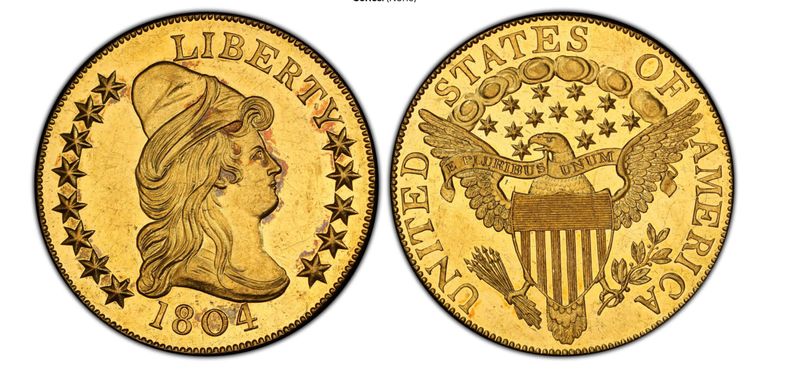
11. 1804 Plain 4 Proof Eagle
The 1804 Plain 4 Proof Eagle is a remarkable piece of U.S. numismatic history, celebrated not only for its extreme rarity but also for its intriguing backstory involving early American diplomacy. Only four of these coins were ever struck, and as of today, only three are known to exist, making it one of the most valuable coins in American coinage, with an estimated value of around $6 million.
Minted in the mid-1830s as part of a special proof set, the 1804 Proof Eagle was not intended for circulation but served as a prestigious gift to bolster diplomatic relations. It was specifically used in negotiations with influential figures like the King of Siam, the Sultan of Muscat, and the Emperors of Cochin China and Japan. This context elevates the coin from mere currency to a symbol of American diplomacy and influence during a formative period in U.S. history.
The “Plain 4” designation refers to a subtle yet significant variation in the coin’s design, particularly the numeral “4” in the denomination, which lacks the decorative elements found on other versions. This detail, combined with its proof status, signifies an exceptional level of craftsmanship and quality, making it highly desirable among collectors and historians alike.
The rarity of the 1804 Plain 4 Proof Eagle, along with its unique role in international diplomacy, contributes to its allure and value. The coin serves as a tangible representation of a pivotal moment in U.S. history, symbolizing not just financial worth but also the nation’s aspirations to establish itself as a respected player on the global stage. Its combination of historical significance, artistic merit, and extreme scarcity solidifies its status as one of the most coveted treasures in the world of numismatics.
Country: United States
Estimated Value at Auction: $2 – $6.7 Million
#10 – 1787 Brasher Doubloon – E.B. on Wing
The 1787 Brasher Doubloon, especially the E.B. on Wing variant, stands out as one of the rarest and most valuable U.S. coins to emerge from the Mint. This version is distinguished by Ephraim Brasher’s initials “E.B.” prominently displayed on the eagle’s wing. The Stickney specimen, renowned for its exceptional quality, is considered one of the finest examples among known Brasher Doubloons, showcasing remarkable detail and craftsmanship. With only seven known to exist, this coin is often regarded as the most valuable due to its unique design and outstanding condition.
Ephraim Brasher, a silversmith and neighbor of George Washington in New York City, struck the nation’s first gold coins, featuring New York’s state coat of arms on one side and the Great Seal of the United States on the other. The Stickney Doubloon has a rich provenance, having been owned by notable collectors, which enhances its allure. As one of the first gold coins minted in the U.S., the 1787 Brasher Doubloon – E.B. on Wing holds a significant place in American numismatic history, with a current value of $5.5 million.
Country: United States
Value: $5.5 million
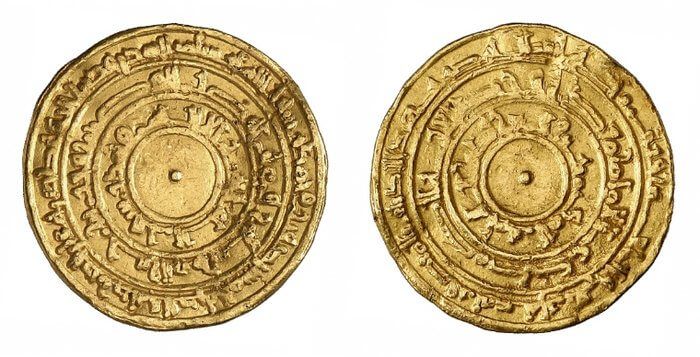
9. 723 Umayyad Gold Dinar
The 723 Umayyad Gold Dinar is an extraordinary example of Islamic numismatic history, recognized as one of the rarest gold coins ever minted. This coin is particularly unique because it is believed to have been struck from gold sourced directly from mines owned by the caliph, lending it not only monetary value but also historical significance as a symbol of the Umayyad dynasty’s wealth and power.
Crafted during the Umayyad caliphate (661-750 CE), the coin showcases intricate designs and inscriptions that highlight the era’s artistic and cultural achievements. One side features the inscription “Mine of the Commander of the Faithful,” emphasizing its connection to the caliphate, while the mention of “in the Hejaz” situates its origin in a region of great historical significance in Islamic tradition, corresponding to modern-day Saudi Arabia.
Beyond its aesthetic qualities, the Umayyad Gold Dinar served a vital role in facilitating trade and promoting economic stability throughout the vast territories of the caliphate, which extended from Spain to India. Its use as currency helped standardize transactions across diverse cultures and regions, enhancing the interconnectedness of the Islamic world during this period.
The rarity of the Umayyad Gold Dinar is emphasized by its limited mintage, making it a prized possession for collectors. Its craftsmanship, historical context, and cultural significance enhance its appeal in the numismatic community, with an estimated value of $6 million. The coin represents not just a financial asset but also a tangible link to a pivotal era in history, making it an exceptional treasure for both historians and collectors.
Country: Umayyad Caliphate
Value: $6 million
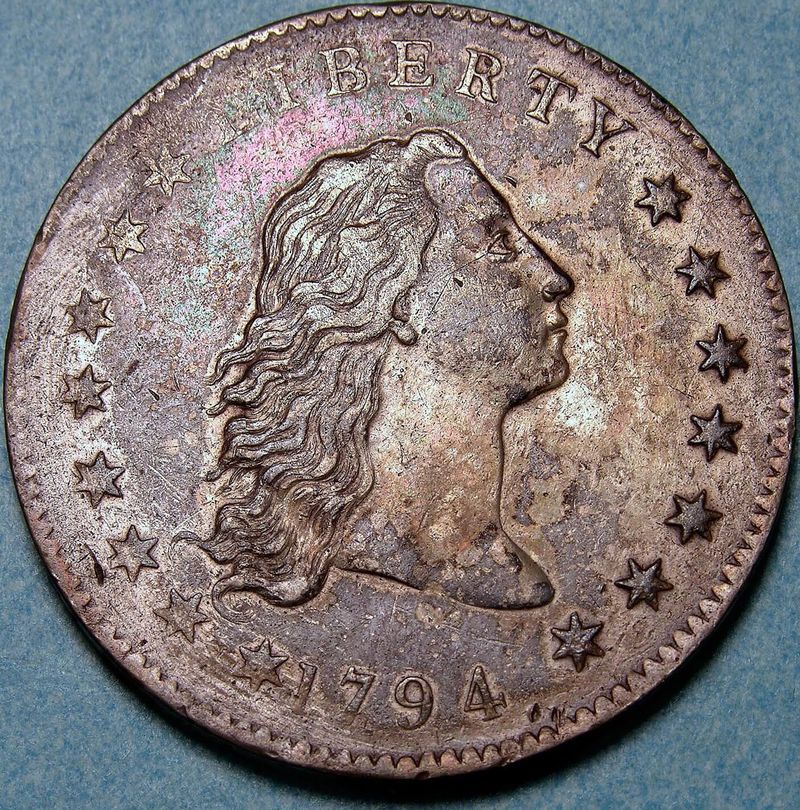
8. 1794 Flowing Hair Silver Dollar (Pogue Collection)
The 1794 Flowing Hair Silver Dollar is a remarkable piece of American numismatic history, distinguished by its original mintage of only 1,758 coins. This rarity is significant because it represents the nation’s first official silver dollar, marking a pivotal moment in the evolution of U.S. currency. Among these, only six coins have been recognized by numismatic experts as being in Mint State condition, underscoring their exceptional quality and desirability among collectors.
During its production, the Mint’s press was primarily designed for smaller denominations, which necessitated adjustments to accommodate the larger diameter of the silver dollar. This led to technical challenges, and the intended mintage of 2,000 coins ultimately fell short due to these complications. As a result, many of the initial pressings exhibit slight defects, making the surviving examples—particularly those in Mint State condition—extremely rare.
The Flowing Hair design adds to the coin’s uniqueness, featuring Liberty on the obverse, symbolizing national identity, and an eagle on the reverse, representing strength. Created by Robert Scott, these artistic elements, combined with its limited mintage and historical significance, enhance its desirability. The 1794 Flowing Hair Silver Dollar is valued at approximately $6.6 million, reflecting its substantial cultural and monetary worth.
Country: United States
Value: $6.6 million
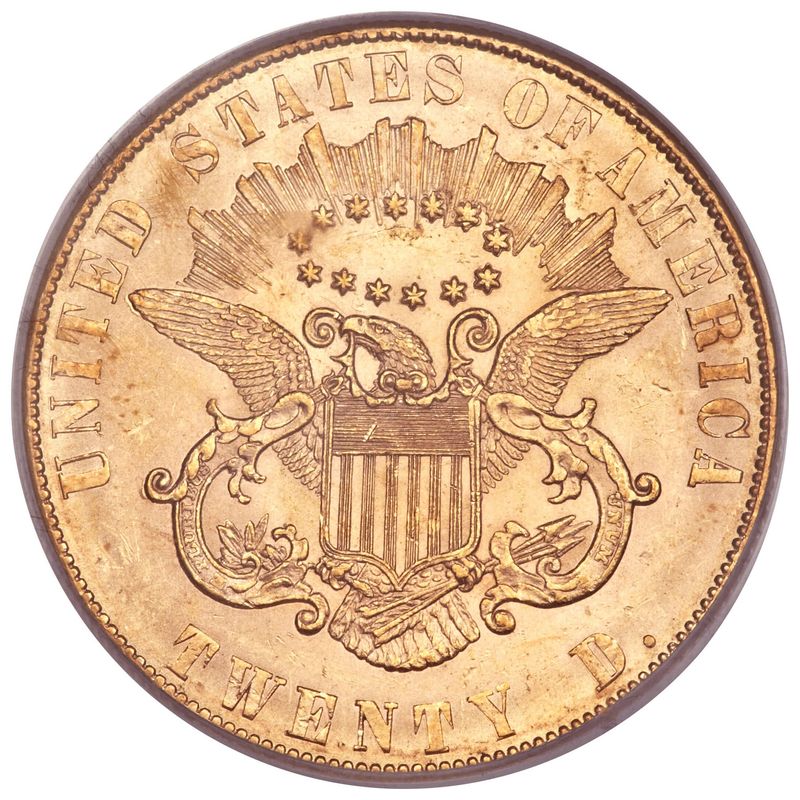
7. 1861 Paquet Liberty Head Double Eagle (Norweb)
The 1861 Paquet Liberty Head Double Eagle (Norweb) is a significant and unique coin in American numismatics for several reasons. Minted during a tumultuous period in U.S. history, it is one of the rarest coins, with only a handful produced. Notably, only two coins were struck in Philadelphia, while over 19,000 were minted in San Francisco and marked with an “S” for circulation. The Philadelphia coins, however, were never released, adding to their rarity and mystique.
The coin is named after Anthony C. Paquet, a skilled engraver who worked at the U.S. Mint and was primarily known for his Mint medals. His unique design for the Double Eagle features a more pronounced relief and a distinctive arrangement of the letters compared to other Liberty Head designs. This makes the Paquet Double Eagle not just a currency piece but a work of art that reflects the engraving techniques and aesthetic values of its time.
The coin’s historical context enhances its uniqueness as well. Minted during the early years of the Civil War, the 1861 Paquet Double Eagle serves as a tangible reminder of a nation in conflict and uncertainty. Its limited production and the subsequent disappearance of many of the Philadelphia-struck coins add layers of intrigue, with some lost to history and others held in private collections.
The combination of its rarity, historical significance, and artistic merit makes the 1861 Paquet Liberty Head Double Eagle a highly coveted collectible, currently valued at approximately $7.2 million. Its place in numismatic history is further solidified by its inclusion in esteemed collections, such as the Norweb Collection, which adds to its allure among collectors and historians alike.
Country: United States
Value: $7.2 million
6. 1787 Brasher Doubloon – E.B. on Breast (Bushnell-Garrett)
The 1787 Brasher Doubloon – E.B. on Breast (Bushnell-Garrett) is a highly sought-after coin, distinguished by its unique features and historical significance. It boasts an exceptionally clean and well-centered strike, unlike other Brasher Doubloons. While most display Ephraim Brasher’s initials “E.B.” on the eagle’s wing, this coin uniquely positions them on the eagle’s chest, suggesting it may be the first struck in the series. This detail enhances its aesthetic appeal and significantly boosts its historical value.
The 1787 Brasher Doubloon is also significant as it represents one of the earliest gold coins minted in the United States, struck by Brasher, a silversmith and neighbor of George Washington. The coin features the New York state coat of arms on one side and the Great Seal of the United States on the other, showcasing both artistic merit and national pride. The dual imagery reflects the early American identity during a formative period in U.S. history.
With only a limited number of Brasher Doubloons in existence, the E.B. on Breast variant’s unique features contribute to its status as one of the most expensive coins in the world, valued at around $7.3 million. Its provenance enhances its allure, having passed through the hands of esteemed collectors and institutions, making it highly desirable in the numismatic market. Collectors and historians view this coin not only as a valuable investment but also as a significant artifact embodying the early spirit of American coinage.
Country: United States
Value: $7.3 million
5. 1804 Draped Bust Silver Dollar (belonged to Sultan of Muscat)
The 1804 Draped Bust Silver Dollar, especially the specimen once owned by the Sultan of Muscat, is exceptionally rare and historically significant. Minted in 1834 yet bearing the date “1804,” it adds to the coin’s intrigue. Originally part of a special presentation set intended as diplomatic gifts, it was given to Sultan Said bin Sultan of Muscat under President Andrew Jackson, emphasizing its role as both currency and a symbol of international relations in that era.
The design itself is iconic: the obverse features a portrait of Lady Liberty, elegantly draped and adorned with a cap, representing freedom and the ideals of the new nation. On the reverse, an eagle is depicted along with 13 stars, symbolizing the original colonies, further embedding the coin in American history. The artistry and craftsmanship of the Draped Bust design have made it a favorite among collectors and historians alike.
Despite its estimated value of around $7.6 million, the 1804 Draped Bust Silver Dollar is not the rarest silver dollar, adding complexity to its story. It is one of only a few known examples, with only a handful recognized in exceptional condition. This coin boasts an impressive provenance, having changed hands very few times, which enhances its allure in the numismatic community. Its association with the Sultan of Muscat not only increases its value but also elevates its status as a significant collectible piece of world history.
The combination of its unique minting background, stunning design, and storied past makes the 1804 Draped Bust Silver Dollar a true gem in the world of numismatics, sought after by collectors and investors who appreciate its artistic, historical, and monetary significance.
Country: United States
Value: $7.6 million

4. 1822 Capped Bust Half Eagle
The 1822 Capped Bust Half Eagle is a remarkable example of early American coinage and a testament to the complexities of numismatic history. Originally minted in 17,796 pieces, its drastic decline in availability is due to loss, destruction, and melting for gold content. Today, only three known specimens exist, making it one of the rarest coins in American history. Of these, only one is available for private collectors, while the other two belong to the esteemed Smithsonian Institution, adding intrigue and exclusivity.
The rarity of the 1822 Capped Bust Half Eagle is further accentuated by its unique history. Over the span of more than a century, the coin has only passed through the hands of three collectors, each of whom recognized its significance and preserved it for future generations. This limited circulation enhances its desirability among serious investors and collectors, as owning such a coin is often viewed as a once-in-a-lifetime opportunity.
Additionally, the design of the Capped Bust Half Eagle is striking, featuring a portrait of Lady Liberty adorned with a draped cap, symbolizing freedom and the values of the newly formed nation. The reverse showcases a majestic eagle, which was a popular motif in early American coinage, further embedding the coin in the cultural and historical context of its time.
The 1822 Capped Bust Half Eagle’s historical significance, stunning design, and extreme rarity contribute to its value of approximately $8.4 million. For numismatists and collectors, it symbolizes American ingenuity and artistry, representing a deep connection to the nation’s early history. Its public exhibition opportunities further enhance its allure, captivating both seasoned collectors and curious visitors alike.
Country: United States
Value: $8.4 million
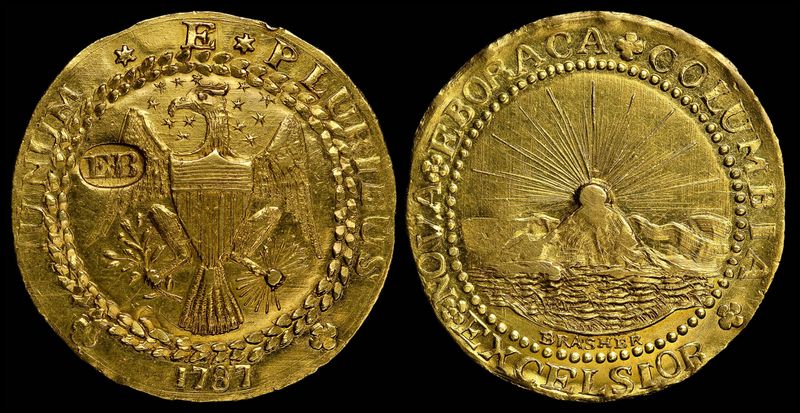
#3 – 1787 Brasher Doubloon – E.B. on Wing (Stickney)
The 1787 Brasher Doubloon – E.B. on Wing (Stickney) is one of the most celebrated coins in numismatic history, regularly appearing on “rarest coin in the world” lists. Its nickname comes from its first documented owner, Matthew Stickney. This doubloon is highly prized for several reasons, notably its unique feature of Ephraim Brasher’s initials “E.B.” displayed on the eagle’s wing, setting it apart from other varieties with the initials in different locations.
One key aspect that sets the Stickney Doubloon apart is its superior quality and striking; it is considered to have one of the finest strikes among existing examples, showcasing exceptional detail and craftsmanship. While only a handful of Brasher Doubloons are known, this specific version is often regarded as the most aesthetically pleasing and valuable due to its distinctive features, such as its clean lines and balanced design.
The Stickney Doubloon has a rich provenance, having been owned by several notable collectors, which adds to its allure and historical significance. Its unique design, exceptional condition, and storied ownership make the 1787 Brasher Doubloon – E.B. on Wing (Stickney) a standout piece in numismatics, highly sought after by collectors and historians. Notably, it has held spots #10 and #6 on lists of the rarest coins, underscoring its lasting importance in valuable currency..
Country: United States
Value at Auction: $9.3 million
2. 1794 Flowing Hair Silver Dollar (Neil, Carter)
The 1794 Flowing Hair Silver Dollar (Neil, Carter) holds immense historical and numismatic significance, recognized as the first silver dollar struck by the United States Mint. Only 1,758 coins were originally minted, making it rare; among these, just six have been certified as Mint State, with the Neil, Carter specimen being the only one designated as “Specimen.” This distinction reflects its superior quality and detail, setting it apart from other examples.
What makes this coin particularly unique is its pioneering role in American coinage. It was the first coin to break the $10 million mark at auction, an event that underscored its status as a cultural and financial milestone in the numismatic world. The coin’s design, featuring the iconic flowing hair of Lady Liberty on the obverse and an eagle on the reverse, exemplifies the early American ideals of freedom and independence.
Moreover, the provenance of the Neil, Carter coin adds to its allure; it has passed through the hands of several esteemed collectors, further enhancing its historical narrative. The combination of its status as a foundational piece of U.S. coinage, its extreme rarity, and its extraordinary quality makes the 1794 Flowing Hair Silver Dollar not just a coin, but a symbol of the nation’s early economic history.
Country: United States
Value: $12 million

1. 1933 Saint-Gaudens Double Eagle
The 1933 Saint-Gaudens Double Eagle holds a remarkable place in numismatic history, not only for its stunning artistry but also for its extraordinary legal and historical significance. Valued at an astonishing $18.8 million, it is recognized as the most valuable coin in the world and stands out as the only 1933 Double Eagle legally owned by a private individual.
Commissioned by President Franklin D. Roosevelt during economic turmoil, the 1933 Double Eagle was part of a minting effort that produced 445,500 coins. However, following Roosevelt’s executive order to abandon the gold standard, these coins were never meant for circulation and were mandated for melting down, destroying most. While two examples were set aside for the Smithsonian Institution, many others were illicitly smuggled out of the Mint, marking a notorious chapter in coin collecting history.
The unique narrative of this coin is enhanced by its previous ownership by King Farouk of Egypt, a renowned collector. After being seized by the U.S. government, the coin was embroiled in a lengthy legal battle, ultimately resulting in a ruling that allowed the sole remaining specimen to remain privately held. This legal status, along with its rich history and dramatic survival story, adds to its unparalleled allure.
The artistry of the coin itself, designed by Augustus Saint-Gaudens, features a striking image of Lady Liberty on the obverse and a majestic eagle on the reverse, symbolizing freedom and national pride. This exquisite design, coupled with its unique story and legal status, cements the 1933 Saint-Gaudens Double Eagle as a standout piece in the world of numismatics, captivating collectors and historians alike.
Country: United States
Value: $18.8 million
Are Valuable Coins Still Being Discovered?
Absolutely! The discovery of more than 700 rare gold coins by a Kentucky resident in a cornfield sent shockwaves throughout the numismatic world and beyond. His find has been valued at more than $2 million.
With a quick search of “rare coins found” multiple articles will populate the feed of very recent findings. It’s without a doubt that there are plenty of valuable coins to be found. Will any coin take the place of the 1933 Saint-Gaudens Double Eagle? It’d have to be a significant artifact and only time will tell.
Until then, keep coin hunting and checking your pocket change.

Final Thoughts
The world of rare coins blends history, artistry, and investment potential. The extraordinary values of coins like the 1933 Saint-Gaudens Double Eagle and the elusive 1913 Liberty Head Nickel reflect their monetary worth and the rich narratives behind each piece. These coins mark significant milestones in the evolution of the U.S. dollar, which has transformed from its early 18th-century origins into a cornerstone of the global economy.
The creation of silver coins involves a multi-step process, and understanding the best practices for storing them is crucial for preserving their value. As collectors and historians uncover treasures, the allure of numismatics remains strong. From lost coins to coveted pieces, the quest for valuable coins captivates enthusiasts and investors. Whether you’re an experienced collector or a curious novice, stay alert—you never know what gems you might find!
